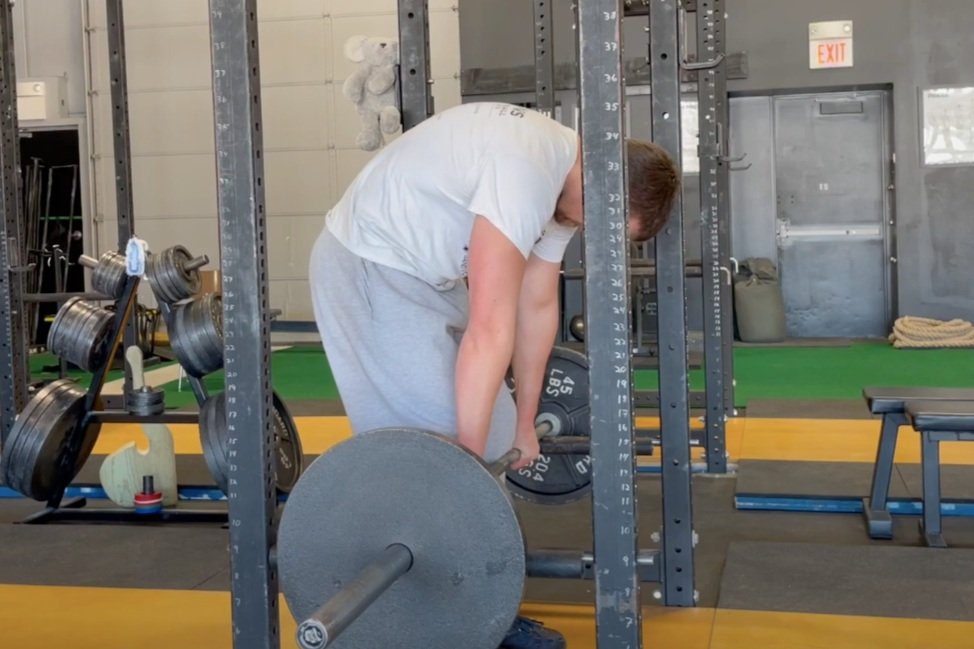The Deadlift: Use Your Lats . . . But DON'T Think About Them
/Do you think he’s thinking about his lats?
Got a barbell that wants to drift away from you when you deadlift? It’s a miserable experience. Let’s fix it fast.
(Watch the included video for a quick demonstration of how to do this.)
Your latissimus dorsi (your “lats”) form a connection between your upper arm and your spine, and because of this, they perform an important function in the deadlift - they keep the barbell close to you as you pull, i.e, they are responsible for keeping the bar over the middle of the foot.
However, if you tend to let the bar swing away from you when you pull, simply cueing yourself to “use your lats” may not be terribly useful as it can be difficult to picture what the lats are actually doing. With this in mind, let’s cover a useful mental picture as well as a few cues to help you use your lats . . . without ever thinking about them.
figure 1
Mental Picture
Instead of holding a barbell, picture yourself holding a pool noodle - you know, those flexible, floaty pieces of foam that you use to whack your friends over the head . . . in the pool. With this mental picture (Figure 1), use one of the following cues:
Cue #1: Bend the bar backward.
If you’re holding a pool noodle, you can actually bend it backward around your shins (as shown in Figure 2). This action of pulling back on the bar is performed by the lats, but you don’t need to think about your lats - you simply think about the action of bending the bar backward around your shins, and the lats will automatically do their job. As a side note, it is rarely useful to think about individual muscles while lifting - think “movements” not “muscles.”
Figure 2: Bend it backward
Cue #2: Pin it to your shins.
Same idea - just a different way to think about it. Cue yourself to keep the bar pinned to your shins, and if you accomplish this, your lats will be doing their job.
As always, we hope this helps you get stronger and live better.
-Phil
PS: Whenever you want even more Testify in your life, here are some free resources:
Book a free intro and strategy session with us HERE.
Pick up a free copy of Testify’s Squat Guide: 12 Tips to Improve Your Squat Now HERE.
Get our free weekly email - containing useful videos, articles, and training tips - HERE.
Follow Testify on Instagram HERE.
Subscribe to Testify’s YouTube channel HERE.
(Some links may be affiliate links. As an Amazon Associate, Testify earns from qualifying purchases.)

















